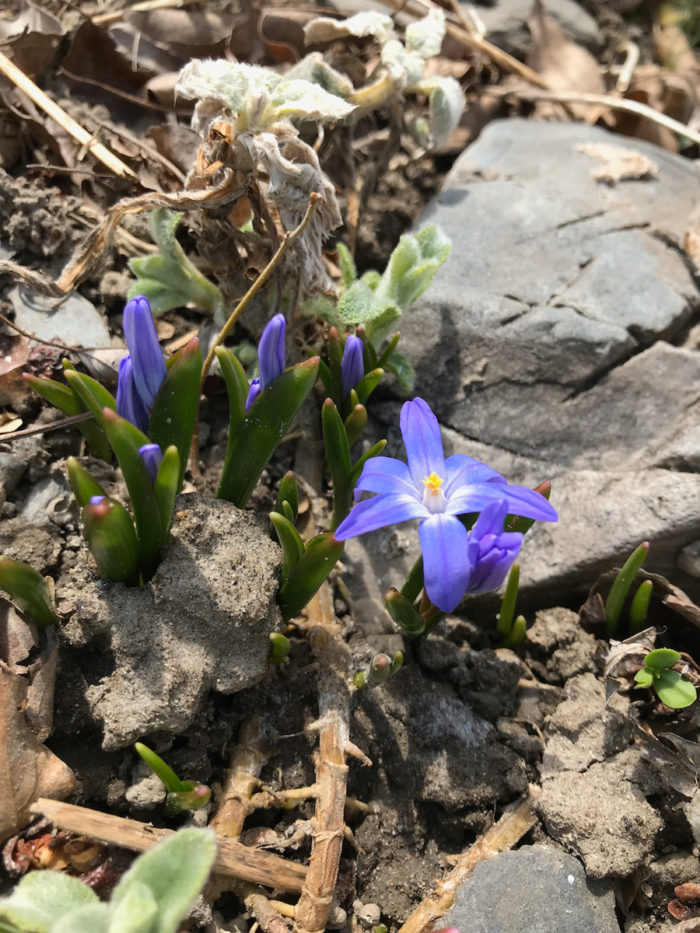
When February ends and March begins, we winter-weary Northeasterners suffer from Farch (February–March), which consists of a continuation of inconsistent weather and monochrome colors. But let’s not knock March. The equinox on the 19th shines as the light at the end of the tunnel. Tree and shrub buds swell, and bulbs poke foliage out of the ground, the pluckiest of which are in bloom by the end of the month. We’re ready to get growing too.
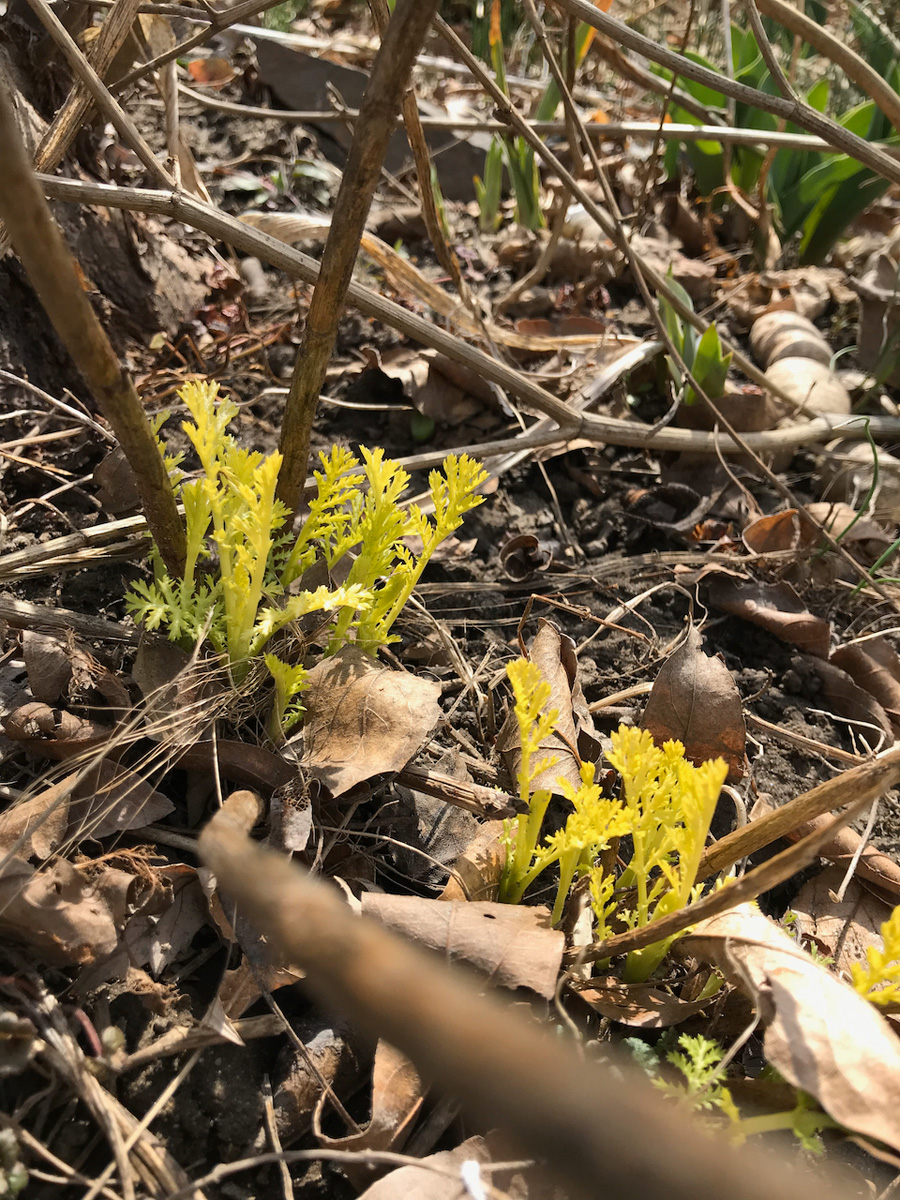
1. Hold off on cleaning up perennial beds
If you tidy up the garden’s insulating mess too soon, you risk damaging spring’s earliest and tenderest new growth and threatening the lives of our garden’s best workforce. Native pollinators, beetles, butterflies, and spiders are still sheltering in the leaf litter and hollow stems of last year’s seed heads. Leave that stuff be no matter how much the disorder torments you. There are other things you can do to prepare for the season ahead.
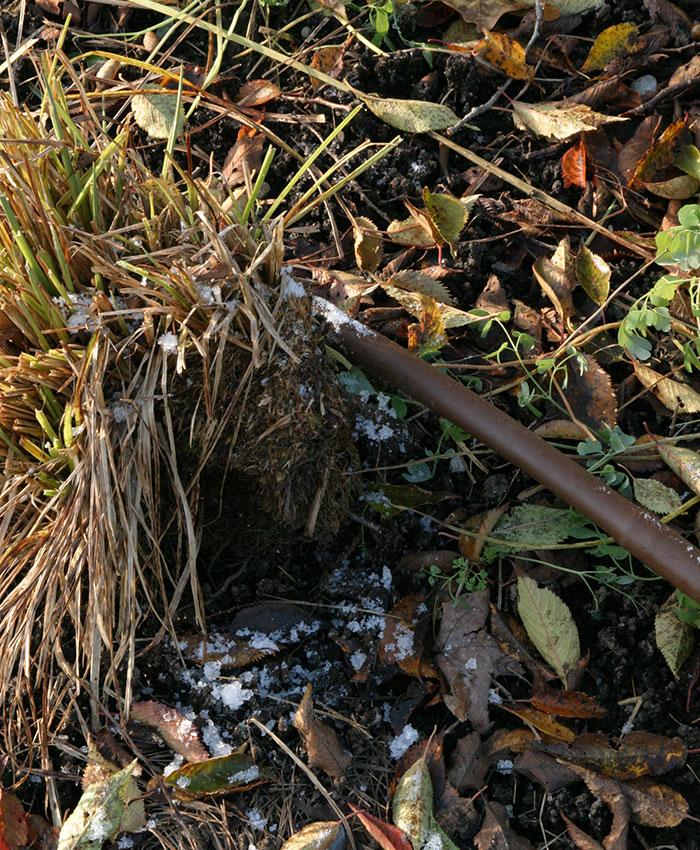
2. Patrol the garden for frost heave and new growth
Gently tamp loosened plants back into the soil, and place more mulch or leafy debris around their crowns as insulation. But lighten the layers of mulch around and on top of early-blooming bulbs and perennials to give them room to grow without having to stretch for the light.
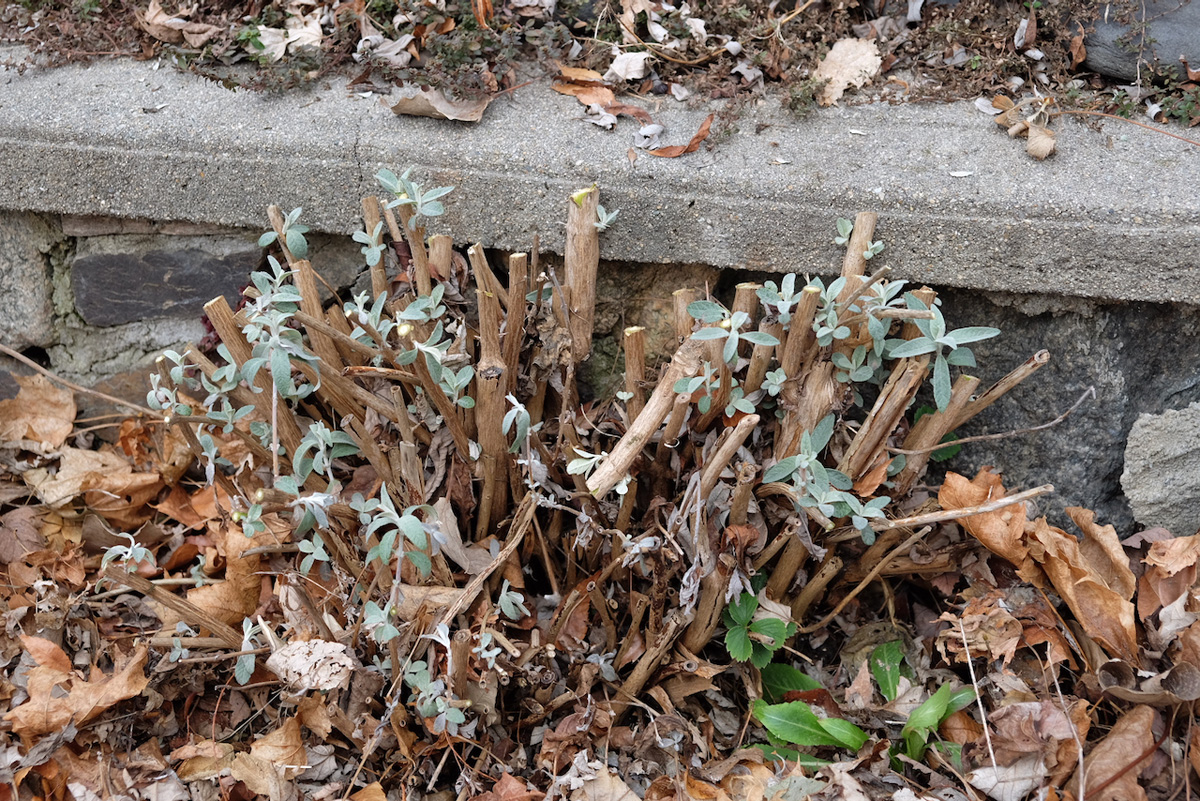
3. Complete your pruning chores while your plants are still dormant
Fruit trees such as pears (Pyrus spp. and cvs., Zones 4–9), apples, and crabapples (Malus spp. and cvs., Zones 4–8) should be pruned after the coldest winter weather has passed but before buds break. Remove water shoots and crossed branches, and evaluate which branches to remove to improve shape and airflow. Coppice (cut down to the ground or to within a foot or so) shrubs that bloom on new wood to keep them from becoming leggy and unattractive. Shrubs that bloom on new wood include smooth hydrangea (Hydrangea arborescens, Zones 3–9), panicle hydrangea (H. paniculata, Zones 3–8), bluebeard (Caryopteris × clandonensis, Zones 6–9), and butterfly bush (Buddleia davidii, Zones 5–9). Some shrubs grown primarily for foliage may also be coppiced to rejuvenate or control growth. This includes Japanese spiraea (Spiraea japonica, Zones 3–8), smoke bush (Cotinus coggygria, Zones 5–8), and ninebark (Physocarpus opulifolius, Zones 2–8).
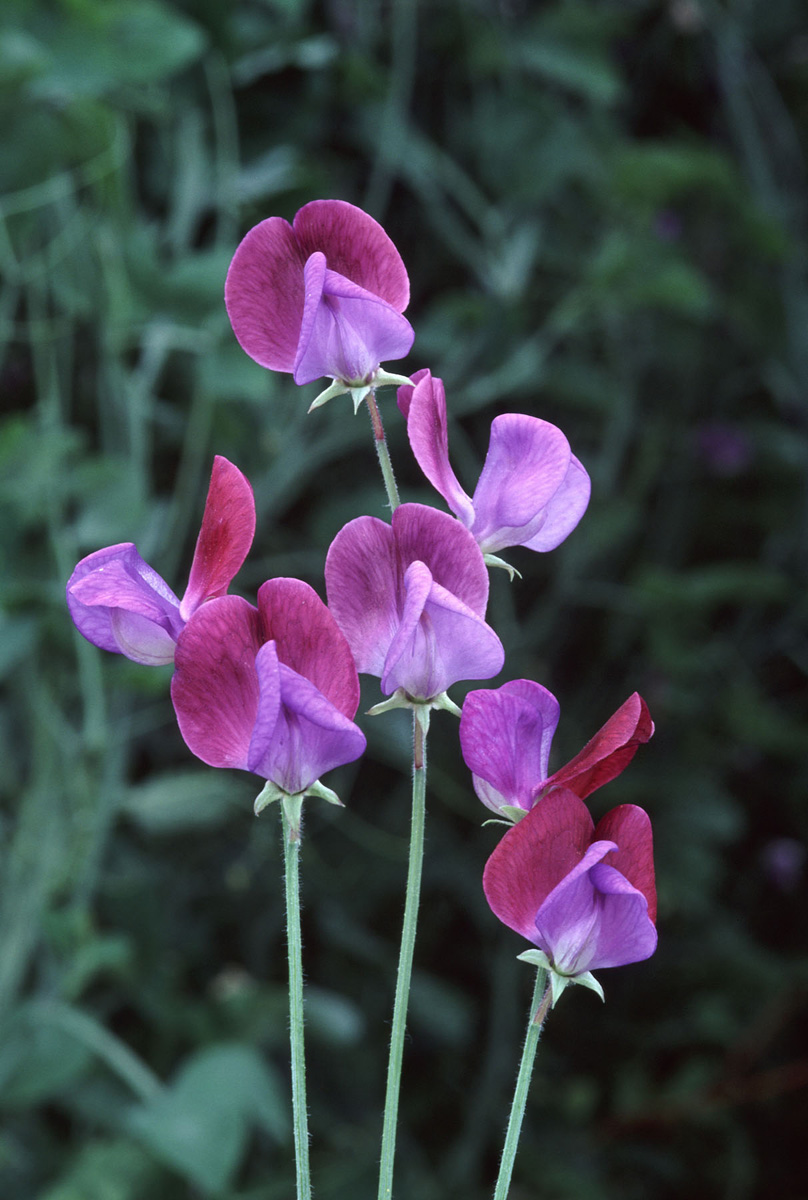
4. Direct sow hardy annuals
As soon as soil can be worked, meaning it isn’t frozen or mud, direct sow cool-weather annuals such as sweet peas (Lathyrus odoratus), bachelor’s buttons (Centaurea cyanus), giant larkspur (Consolida ajacis), and love-in-a-mist (Nigella damascena). Also, place seed orders if you haven’t already; it isn’t too late.
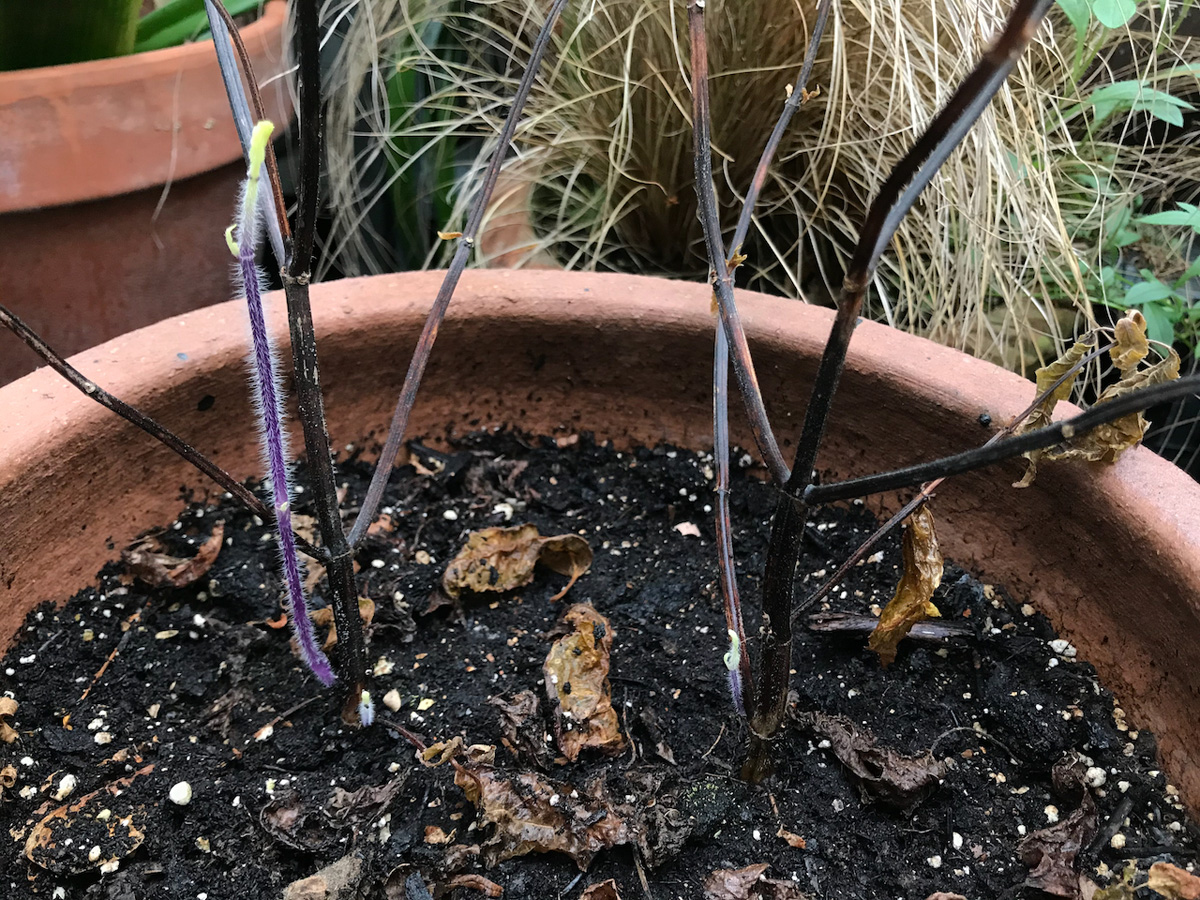
5. Pay attention to overwintering plants and houseplants
Start fertilizing your houseplants once per month with a dilute solution of water soluble or liquid fertilizer. Choose one formulated for houseplants and made from recognizable ingredients, with a balanced ratio of nitrogen, phosphorus, potassium, and micronutrients. Check plants, bulbs, and tubers in dormant storage for signs of life or death. If potted plants are dry, water them; if they’re beginning to grow, bring them into the light. Air out any tubers that are starting to mold or rot.
It won’t be long before everything takes off and the garden demands all the time and attention we have to spare. In the meantime, use Farch to get ready and set.
—Kristin Green is the author of Plantiful: Start Small, Grow Big With 150 Plants That Spread, Self-Sow, and Overwinter. She gardens in Bristol, Rhode Island.


















Comments
Log in or create an account to post a comment.
Sign up Log in